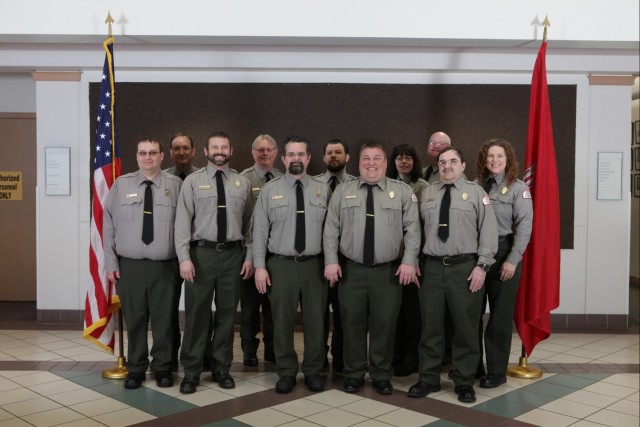
Kye Carpenter’s love for the outdoors began on the quiet banks of Washington’s rivers, fishing alongside his grandparents near Pasco.
“I was an orphan, and my grandparents took me in,” Carpenter said. “And because of their limited means, we wound up spending a lot of time, fishing and camping.”
Those formative years—spent under open skies, near cool streams and quiet campfires—would become the foundation of a 25-year career in federal service.
This year, as the nation celebrates National Park and Recreation Month, Carpenter is also being recognized on World Ranger Day, June 31, for his exemplary service as a U.S. Army Corps of Engineers (USACE) Park Ranger with the Walla Walla District.
Carpenter began his career in USACE’s wildlife program and joined the ranger ranks in 2002. Over the next two decades, he steadily advanced through the agency, ultimately becoming shoreline manager at McNary Lock and Dam, and responsible for patrolling over 300 square miles of shoreline, federal lands, habitat management units, levees and 120 miles of the Snake and Columbia rivers.
“As USACE Park Rangers, we represent the largest federal provider of outdoor recreation in the United States,” Carpenter said. “That means protecting public lands, ensuring safe recreation, and connecting with the communities we serve.”
Within the Walla Walla District, some rangers operate out of the Tri-Rivers Natural Resources Management Office, which oversees recreation facilities and natural resource management at McNary, Ice Harbor, and Lower Monumental projects. Annually, across the District’s 107,000 square miles, over eight million visitors are afforded recreation opportunities such as camping, boating, fishing, hiking, and wildlife viewing.
The role of a USACE park ranger, also called natural resource specialist, extends far beyond trail patrols and visitor assistance. For Carpenter, duties include planning improvements to recreation sites, enhancing shoreline protection, monitoring habitat conditions, and engaging with thousands of park visitors each year.
During a time when Americans are feeling the squeeze of rising vacation costs, the work of rangers like Carpenter has taken on new meaning.
According to a recent University of Maryland–Baltimore County poll, over 47% of Americans have scaled back or canceled vacation plans due to financial constraints. For many, local parks and waterways managed by USACE offer affordable, accessible alternatives.
“We’ve definitely seen an uptick in visitation,” Carpenter said. “Instead of trips to Disneyland or Sequoia National Park, people are choosing to enjoy what’s right in their backyard—camping, fishing, boating, and just being outdoors.”
Over the years, Carpenter has led numerous initiatives to make local parks more welcoming and resilient. He oversaw electrical upgrades at Hood Park, accommodating travelers with more modern, heavier RVs. He helped resurface access roads, improving safety and accessibility. He even proposed using reverse osmosis to filter nitrogen and phosphorus from Snake River water, enhancing environmental protection through natural wetland systems.
Perhaps most notably, in 2003, Carpenter became the first USACE ranger in the Northwest to use satellite imagery to monitor habitat management units—a now-standard practice across the region.
“Kye is an invaluable leader, mentor, and advocate for environmental stewardship,” said Gregory Watson, Chief of Natural Resources for the Walla Walla District’s Tri-Rivers NRM office. “Park rangers are not just caretakers—they’re ambassadors. Kye exemplifies that every day.”
Each year, USACE rangers across the Walla Walla District contribute to safe recreation at 106 recreation areas, 325 trail miles, and over 60 boat ramps—part of a national system that sees over 260 million visits annually.
As Americans rediscover the value of public lands, stories like Carpenter’s remind us that outdoor spaces don’t just happen—they’re protected, improved, and made accessible through the work of professionals who believe in their purpose.
And for Carpenter, it all started with a fishing pole and a quiet patch of riverbank in Pasco.
For more information about recreation opportunities within the Walla Walla District, visit https://www.nww.usace.army.mil/Missions/Recreation

Social Sharing